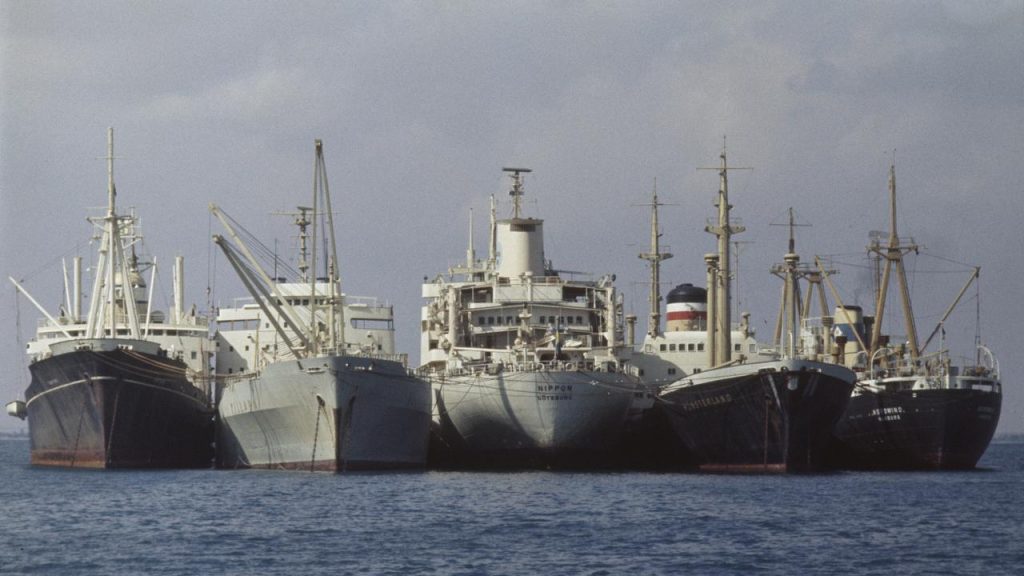
To listen to this reflection as a podcast, click here.
The Suez Canal is one of the world’s most vital shipping links.
Its 120 miles connect the Mediterranean Sea with the Red Sea, cutting a swath through the arid Egyptian wilderness on the west and the deserts of Saudi Arabia on the east. This “shortcut” usually takes about 12-15 hours, allowing ocean-going vessels traveling between Europe and the ports of Asia and Australia to avoid an almost week-long trip around the entire continent of Africa.
In June 1967, the Six-Day War broke out between Israel and other Middle Eastern countries, including Egypt. When the guns began firing, there were 14 cargo ships traveling northward through the canal.
The journey of those ships turned out to be considerably longer than any of their crews could ever have imagined.
Israel swept in and occupied Saudi Arabia, giving them control of the east side of the canal. Egyptian president Nasser, recognizing a new strategic danger, immediately ordered a halt to all shipping. Both the northern and southern ends were blocked with sunken vessels, debris, and thousands of pounds of explosives. The stranded ships, with no place to go, made their way to the Great Bitter Lake, a large natural feature that forms the widest part of the canal.
The marooned sailors acknowledged each other. They represented eight different countries: West Germany, Sweden, France, the United Kingdom, the United States, Poland, Bulgaria, and Czechoslovakia. With regard to the Cold War, which was then at fever pitch, the first five represented the democratic West. The other three were aligned with the Soviet-dominated East.
At first, it was kind of fun.
“We were in a very comfortable prison,” remembers Captain Miroslaw Proskurnicki of the Polish ship Jakarta. “The first month was a holiday.” Then a dreary sameness began to set in. “The second month was very hard,” he said. “By the end of the third month, it was terrible.” The sailors had little to do except putter around the lake, keeping their boats in good working order. On top of it all, they were literally in the middle of an ongoing skirmish. Gunfire and rockets flew from shore-to-shore over their heads.
In October 1967, after experiencing four months of these strange circumstances, the officers and crews of all 14 ships decided to moor together and form an alliance. They met onboard the British ship Melampus and formed the Great Bitter Lake Association.
At first, the alliance existed simply to provide mutual support. Over time, however, it became the basis for what can only be described as a micronation.
Each ship took on a special role to benefit the rest of this floating “country.” The Swedish ship Killara invited the other 13 ships to use its onboard swimming pool. The Polish boat volunteered to become the post office. Another of the British ships, the Port Invercargill, was big enough to host soccer matches. The Bulgarian freighter Vasil Levsky transformed one of its rooms into a movie theater. Yet another ship served as a hospital. And the German freighter Nordwind became the site for Sunday morning church services – which, according to its captain, featured a great deal of beer.
There were sailing regattas, life boat races, and cricket matches. Temperatures were so hot that sailors cooked steaks atop 35-gallon drums. The crews began calling themselves the Yellow Fleet, since the decks of their ships were regularly dusted with desert sand.
Time marched on. The canal remained closed. When Tokyo hosted the 1968 Summer Olympics, the 14-ship armada hosted the Bitter Lake Mini-Olympics, which featured competitions in weightlifting, water polo, air rifle shooting, high jumping, and plenty of swimming.
The floating micronation even created its own postage stamps, which the Egyptian postal authority actually recognized. Today those handcrafted stamps are among the most prized possessions of collectors the world over.
Careful negotiations allowed the sponsoring countries to send in fresh supplies of food and fuel. Ultimately most of the crew members were allowed to go home, with replacements taking their spots.
The odyssey finally ended when the canal was reopened as part of the settlement of the Yom Kippur War in the early 1970s. Shipping resumed in 1975. That meant the 14 cargo ships had been marooned for an astonishing eight years. When it was time to sail away, only two of the vessels were capable of moving under their own power.
What did the world learn from the Yellow Fleet?
Against all expectations, people from opposite sides of the geopolitical universe could actually get along. They could work together and play together – right in the middle of a war zone. Sailors who spoke different languages and represented different ideologies ended up caring more about the common good than what was supposed to keep them apart.
As a result, they actually ended up caring for each other.
We can do the same.
We may not be able to stop the rockets that keep flying over our heads in the culture wars and real wars of the 21st century. But we can create our own flotillas of security and significance – whether those turn out to be congregations, mission agencies, neighborhood associations, or just small groups of people who are tired of feeling marooned in the midst of chaos, and want to live well with each other.
You don’t have to own a boat. And you surely won’t have to make your own stamps.
But Jesus would say you’ll definitely want to bring two things to the party:
A sincere love for God and a relentless love for people, even from the other side of the world.
